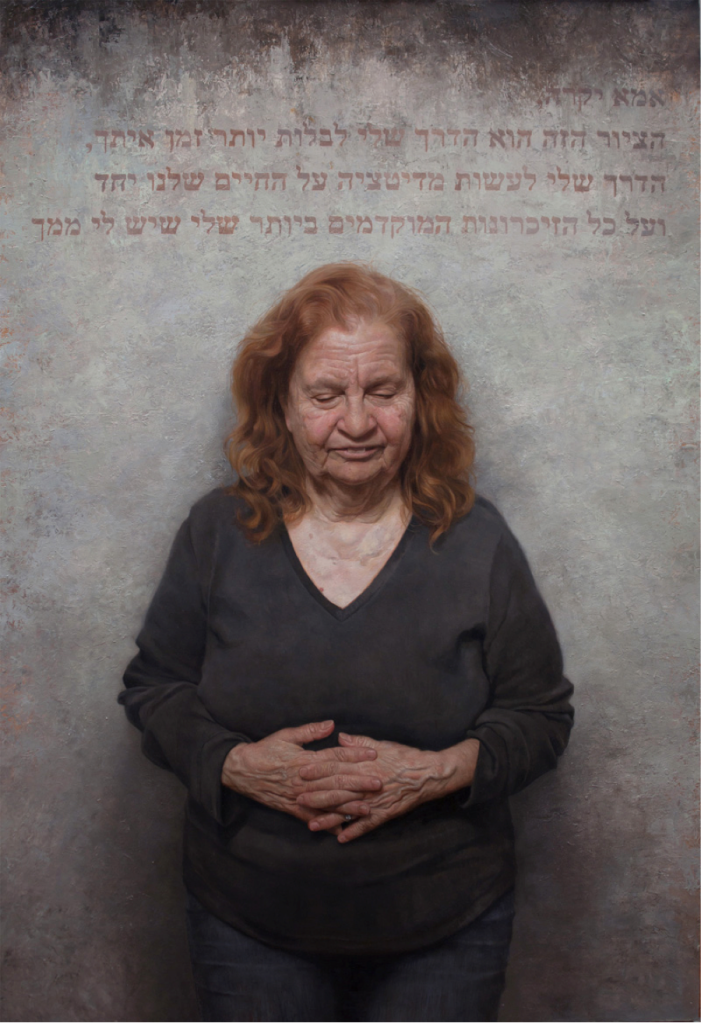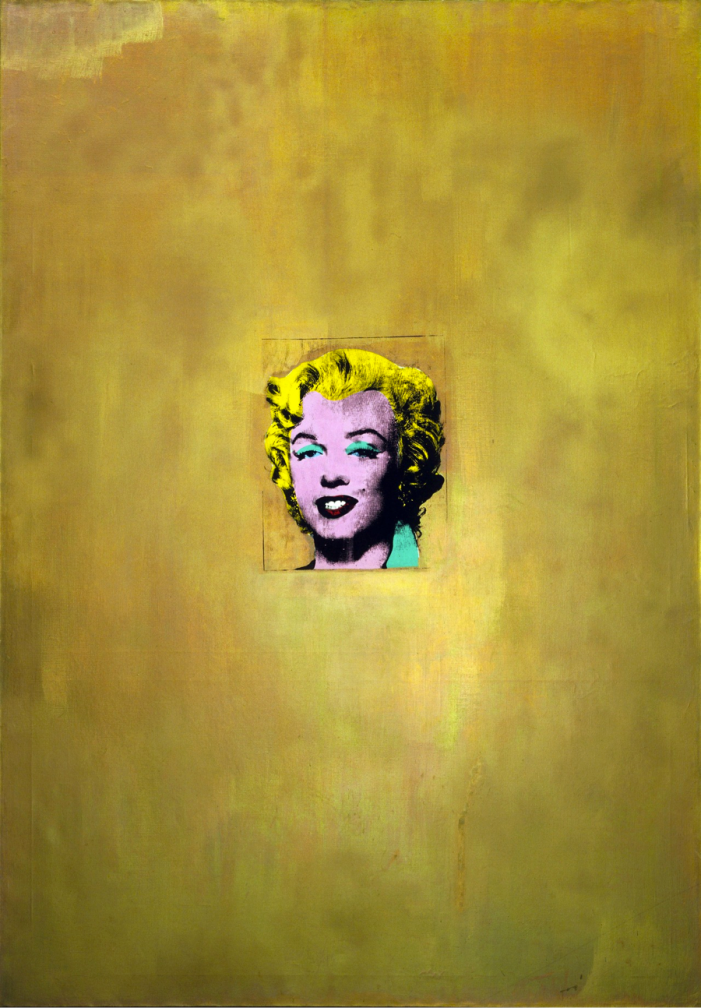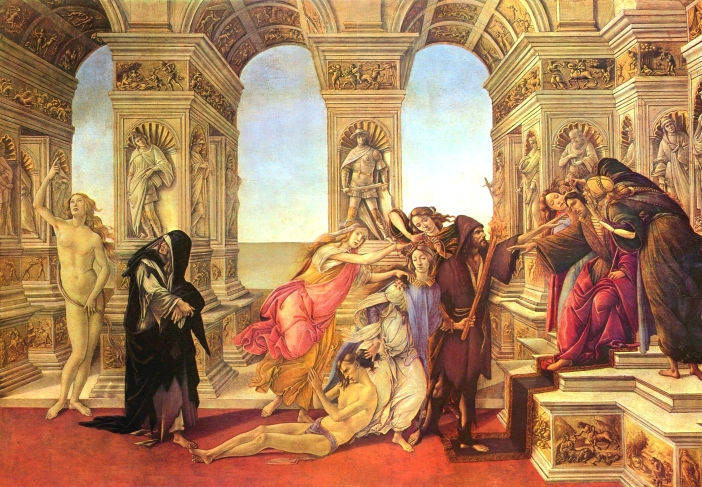When ‘Christ in the House of His Parents’, by John Everett Millais, was first exhibited in 1850 the art world was scandalized, perturbing Victorian sensibilities. One notable critic, the novelist Charles Dickens, suggested that viewers of Millais’ painting ‘[H]ave the goodness to discharge from your minds all Post-Raphael ideas, all religious aspirations, all elevating thoughts, all tender, awful, sorrowful, ennobling, sacred, graceful, or beautiful associations, and to prepare yourselves, as befits such a subject Pre-Raphaelly considered for the lowest depths of what is mean, odious, repulsive, and revolting’ (Baldaque, 178). Millais was a member of the Pre-Raphaelite Brotherhood, a small group of Englishmen who sought to emulate the artists of the Middle Ages and early Italian Renaissance and rejected the established traditions of the art academies. Although Dickens decried the Pre-Raphaelite’s regressive stylistic preferences, he and Millais both had a keen interest in contemporary life. The Pre-Raphaelites were heavily interested in portraying modern life, as they understood it. The original Brotherhood (consisting of Millais, Hunt, and Rossetti) was dissolved by 1853, only four years after its inception; however, thanks to subsequent artists like Edward Burne-Jones and John William Waterhouse, the symbolic and stylistic ideals of the PRB would endure for nearly forty years. In that span of time, one dominant trope in Pre-Raphaelite art retained its prominence: the concept of the vulnerable woman. In this paper, I’ll be focusing on the work of the original Brotherhood, as well as their contemporary Ford Madox Brown.
The Pre-Raphaelites were at their apex during the height of the Victorian era (1837-1901). The trope of the vulnerable woman in Pre-Raphaelite art can best be understood within the context of the broader cultural sensibilities of the time. Victorian women were believed to be devoid of sexual passion, and any divergence from this culturally ingrained notion was met with hostility and disgust. In pre-modern times, men and women were seen as being equally prone to licentiousness; however, by the mid-18th century, cultural mores began to change. Sexual promiscuity was seen as a symbol of aristocratic decadence that threatened middle-class virtue, a concept borne out of Protestantism (Cott, 223). The subsequent British Evangelical movement of the late 18th and early 19th centuries advocated chastity for both genders, stressing that women had the greatest power to affect moral change. Notable female thinkers like Hannah More (an evangelical herself) fought against the notion that women were merely objects meant to sate men’s sexual desires, advocating that women emphasize their moral and intellectual abilities rather than their ”mere animal” capacities (Cott, 224). As a result of these religious and cultural changes, women began to be seen as bastions of social goodness, earthly embodiments of spiritual wholeness.
By the time the Pre-Raphaelites formed in 1849, the notion of the chaste woman was thoroughly entrenched in the zeitgeist of the 19th century and had become a moral pillar of the Victorian era. The original members of the Brotherhood (Millais, Hunt, and Rossetti) were evangelical Christians, and their views concerning the fair sex were thusly affected by their religious persuasion. The Brotherhood was founded with the intent to restore the tradition of sacred art in England and sought to emulate artists who predated the Raphaelistic tradition, which they viewed as being too secularized and spiritually barren (Sussman, 46). The Pre-Raphaelites and other advocates of artistic ‘primitivism’ (i.e., a revival of medieval and early-Renaissance religious sentiments) desired to use art as a means of religious education and moral advancement (Cooper, 407). Fra Angelico, a 15th-century Italian painter and Dominican monk, received adulatory praise from the Pre-Raphaelites for the sanctity of his paintings. John Ruskin, an art critic and avid defender of the Brotherhood, stated that Fra Angelico’s figures possessed the ”the silence of ineffable adoration”; Hunt even labeled him as an ‘Immortal’ (those who the Brotherhood deemed as divinely inspired) in the second edition of ‘Pre-Raphaelitism and the Pre-Raphaelite Brotherhood’, published in 1914 (Cheney, 15). The Brotherhood’s paintings were meant to inspire and be cherished for their subtext, not only their beauty. Being of deeply religious character, the Pre-Raphaelites considered it their solemn duty to help illuminate, and hopefully ameliorate, social ills through their paintings. Because Victorian society held social grace and chastity as the ultimate virtues of femininity, women were understood to be constantly vulnerable to temptation and corruption; a fall from their spiritual pedestals would result in a degradation of society, according to Victorian mores. A fallen woman, as understood by the Brotherhood and Victorians at large, deviated from the socially accepted ideal of womanhood when her sexual appetites overrode her cultural responsibility of remaining chaste and sexually passionless (Nead, 34).
The trope of the vulnerable woman in Pre-Raphaelite art was present as early as 1851 when Millais exhibited his painting ‘Mariana’ for the first time. This painting was accompanied by a Tennyson poem, inspired by the character Mariana in Shakespeare’s “Measure for Measure”.
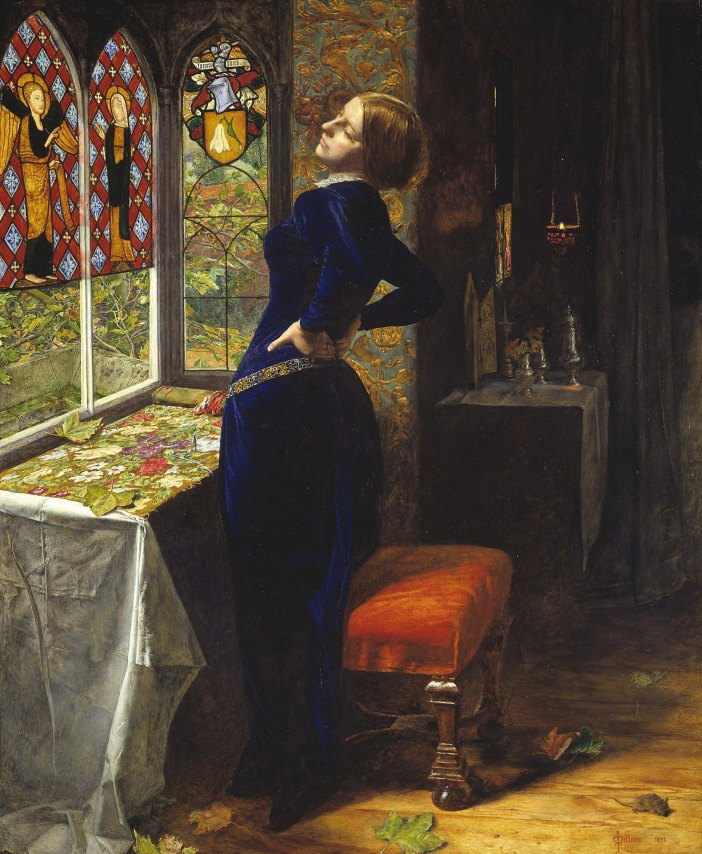
Millais, like the other Pre-Raphaelites, had a great appreciation for literature, especially British literature, and much of his work was intimately tied to it. In this painting, Mariana is longing to be reunited with her lover who was lost at sea. Symbology, so cherished by the Brotherhood, is integral to understanding this scene. The autumn leaves are symbols for the passing of time, and her longing for her lover is suggested by her arched back and the knitting needle thrust into the table. Millais instills the scene with a sense of yearning, portraying a woman who has fallen victim to the tribulations of the world, hopeless and forlorn. The annunciation scene in the stained glass (a glimmer of Millais’ evangelical bent) contrasts the peace and serenity of the Virgin with the longing and desperation of Mariana (Fowle). Much like her lover, but in a figurative sense, Mariana has been swept out to sea and has lost her bearings, powerless and ungrounded without an anchor in her life. Millais’ most poignant representation of the vulnerable woman is perhaps ‘Ophelia’, completed in 1852.
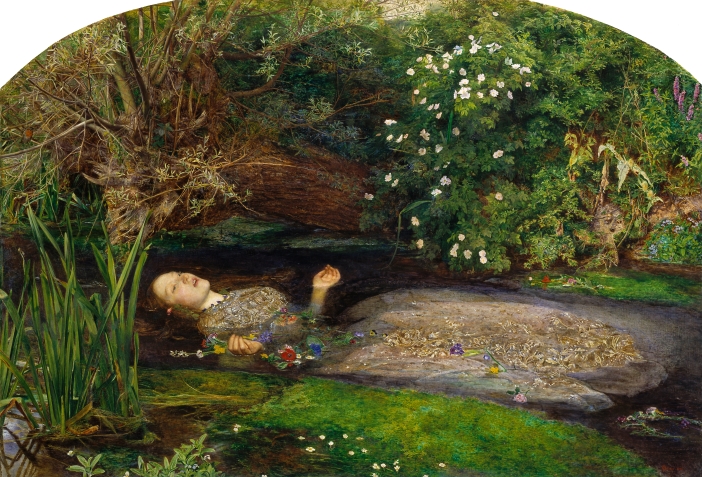
Like ‘Mariana’, ‘Ophelia’ is a literary painting, but based on the work of William Shakespeare rather than Tennyson. Elizabeth Siddal, a model favored by the Pre-Raphaelite Brotherhood and for a time Dante Gabriel Rossetti’s wife, portrays the tragic character of Ophelia (Bradley, 141). “Ophelia” embodies John Ruskin’s belief that art should have a moral imperative. Viewers would have drawn a connection between Ophelia’s mistreatment (and subsequent suicide) and the abuse women in Victorian England endured, which occurred despite their supposed religious purity. In a sense, Millais exposed the double standard that plagued Victorian society: women were considered bastions of cultural goodness and were expected to act accordingly, yet they were still under the yoke of patriarchal tyranny. Millais, like many of his contemporaries, believed women had been forced into depravity and suffering by modernity. The tragic suicide of Ophelia was the perfect analogism for the crumbling social values Millais perceived.
William Holman Hunt, the second founding member of the Brotherhood, is perhaps best known for ‘The Awakening Conscience’, a painting which he hoped ‘[m]ight be said to have done not a little in calling attention to the class concerned’ (Bullen, 58).
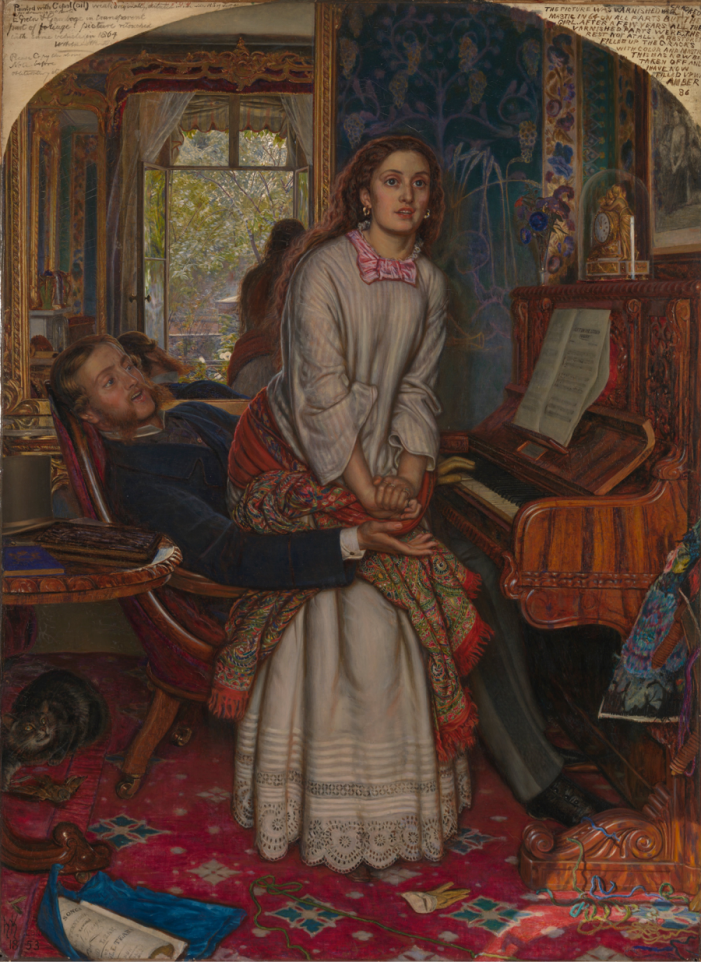
Hunt, like Millais, was an evangelical Christian, but it appears he was not always so religious. In a letter addressed to his good friend John Ruskin, Hunt states that he was ‘[a] contemptuous unbeliever in any spiritual principles’ until he was given a copy of ‘Modern Painters’ (a work by Ruskin) by a friend attempting to convert him to Roman Catholicism (Landow). His religiosity no doubt contributed to the heavily symbolic paintings, ‘The Awakening Conscience’ in particular. The painting has a certain earnestness, a product of his intense faith, which he claims separated him from Rossetti, who was ‘[t]oo absorbed with Dante and French literature’ and Millais, who ‘never read anything’ (Landow). In Hunt’s painting, a kept woman (i.e., a mistress) realizes she has been led astray and suddenly begins to rise from the lap of her partner. Like Millais, Hunt loved to analogize. The cat and mouse beneath the table symbolize the couple: the woman is the mouse, a representation of the meek attempting to escape from the clutches of sin, and the man is the cat, manipulative, depraved, and predatory. The woman’s gaze and sudden upward movement imply a sense of urgency and some kind of epiphany leading to an “awakening”. Hunt’s painting is hopeful and revelatory and implies that the woman will find some absolution. In Victorian England, prostitution was rampant and institutionalized, and evangelicals like Hunt were determined to see this social malignancy eradicated. Hunt, more than his fellow brethren, believed that Divinity guided his brush (Landow).
Dante Gabriel Rossetti, named after the famed Italian poet Dante, was the third member of the Brotherhood, and his paintings were generally more sensual than those of his compatriots. However, much of his work was just as religiously inspired as Hunt’s, though it was presented less earnestly. Women feature prominently in Rossetti’s paintings and in two in particular the notion of the vulnerable woman is well represented. The first of these paintings, ‘The Annunciation’ (‘Ecce Ancilla Domini), painted in 1850, draws on the tradition of annunciation painting and the Renaissance tradition of fresco.
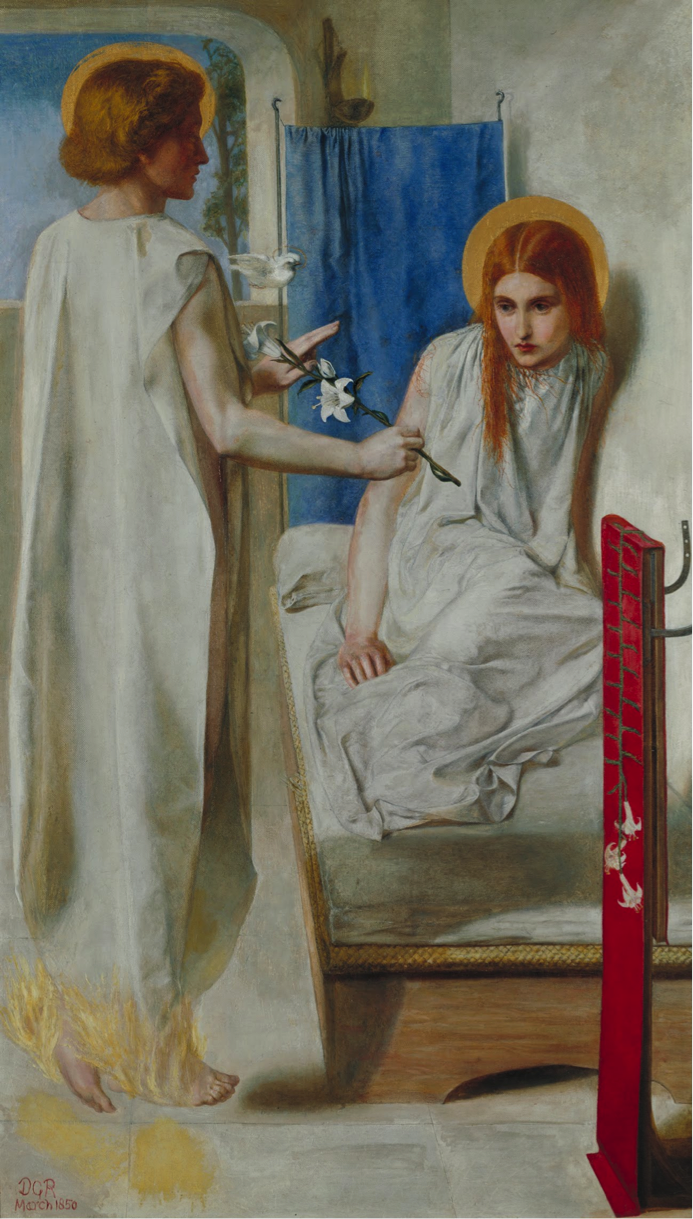
Rossetti’s sister who is cowering before the angel Gabriel represents the Virgin Mary. Unlike earlier annunciations, the Virgin is portrayed as meek and frightened, as opposed to refined and regal (as in the work of Fra Angelico). Gabriel holds a lily that leads to the area of her abdomen, referencing the Virgin’s imminent impregnation (Fowle). The Virgin is portrayed as a young girl who has been swept up in a divine plan by no action of her own; her cowering body and meek facial expression reveal her timidity and vulnerability, qualities not usually entertained by the old masters. Rossetti also tackled the idea of the vulnerable woman in his ‘Beata Beatrix’, which is a kind of prophetic construction of Elizabeth Siddal as Beatrice, Dante Alighieri’s lost love. Siddal was a troubled woman, and she and Rossetti had a tempestuous relationship. In Dante Alighieri’s Divine Comedy, Beatrice (who died an untimely death) served as a spiritual guide to the heavens. The relationship between Rossetti and Siddal ended very similarly to Dante and Beatrice’s; after miscarrying, Siddal sank into a deep depression and became addicted to the opiate laudanum, and later overdosed, leading to her untimely death (Bradley, 102). After her death, Rossetti (perhaps melodramatically) buried his book of poetry with her, but later exhumed her in order to retrieve the poems for publication (Bradley, 142). The memory of Siddal would haunt Rossetti for the rest of his life. In this painting, the light that bathes Siddal’s face indicates her assumption into the divine realm, a symbolic reference to Beatrice (Fowle). Like other Pre-Raphaelite paintings, Rossetti portrays Beatrice as an innocent character who has been overwhelmed by the tumults of reality. ‘Beata Beatrix’ is an example of the unfortunate conclusion of innocence in an unfair and dangerous world.
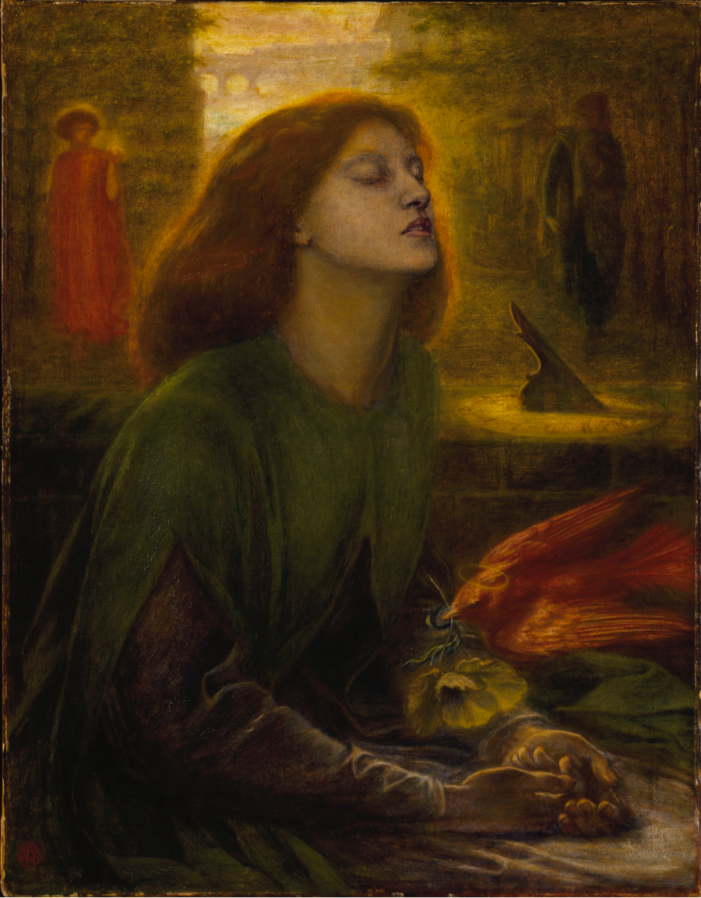
The Pre-Raphaelite Brotherhood was disbanded in 1853, but the aesthetic they had established blossomed in the subsequent years. A contemporary of the Brotherhood, and a major influence on their aesthetic, was Ford Madox Brown. His painting ‘Take Your Son, Sir!’, which he left unfinished, is a more ambiguous and less romantic portrayal of the trope of the vulnerable woman in Victorian society. Brown used his wife and child as models for the painting, so it seems unlikely that it is meant to represent bastardy, as some critics have suggested (Treuherz, Bendiner, Thirlwell, 180). The painting is striking because unlike other Pre-Raphaelite artists (or any other Victorian artists, for that matter) the female figure is given great authority and occupies the center of the space, demanding the viewers’ attentions. Brown never wrote about this painting, leaving his intentions for it unclear. However, what is immediately apparent is the stark difference between Brown’s Victorian woman and those of his contemporaries. The woman seems to be drawn and pale, and her body language reflects the burden the child has placed upon her. She seems almost relieved to be passing it on to the father, who we can see reflected in the mirror behind her. The woman’s aggressive posture and resolute nature seem a far cry from the vulnerable women that the Pre-Raphaelites portrayed. Later critics have viewed the painting as a social commentary, though, as aforementioned, there is little evidence to support this claim, only conjecture. Bastardy, adulterous women passing off illegitimate children as their husband’s true offspring, was incredibly taboo in Victorian England. At that time, it was deemed a social evil for a woman to be unfaithful. The painting might be seen in this light, especially since the child Brown portrayed here was born out of wedlock (the couple married shortly after he had begun the painting) (Treuherz, Bendiner, Thirlwell, 181). Her aggressive body language and expression demand shared responsibility for the child. Brown, unlike others in the Brotherhood, was not very religious, even stating that ‘[T]here is [no] passage in the life of Christ that particularly sets my imagination going’ (Bendiner, 106). This irreligious persuasion perhaps allowed him to view women from a different perspective than evangelicals like Millais and Hunt. Interestingly, Brown has given her some gumption, and the Victorian understanding of vulnerability is lessened somewhat by her willingness to confront the father of the child. Her distinct and active character are a direct challenge to the holier than thou aura of Millais and Hunt’s paintings.
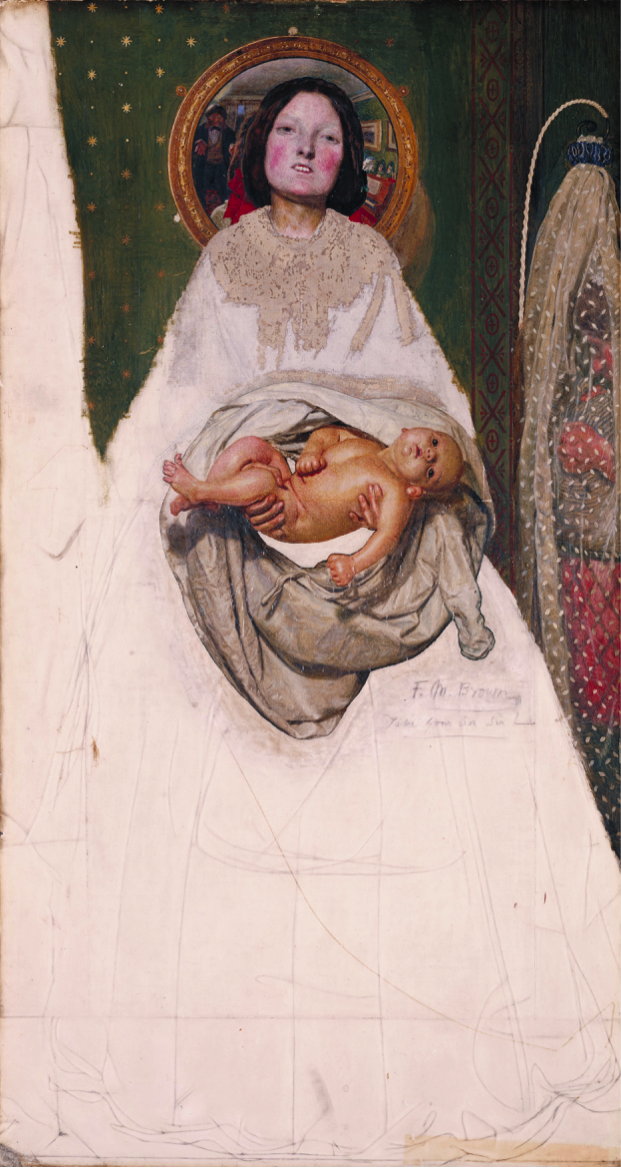
The Pre-Raphaelite Brotherhood had an indelible impact on the course of art over the last half of the 19th century and would come to epitomize the romantic sensibilities of the Victorian era. Even Charles Dickens, who so ardently opposed their artistic vision, eventually lessened his disdain, writing to Millais the following: ‘”Objecting very strongly to what I believed to be an unworthy use of your great powers, I once expressed objections in (this) same journal. My opinion on that point has not in the least changed, but it has never dashed my admiration of your progress in which I suppose are higher and better things…” (Fleming). The trope of the vulnerable woman would become a fixture of Victorian art for the next fifty years. It would later transition from the religious, evangelical foundations that drove Millais and Hunt, to the more literary and secularized artwork of Burne-Jones and Waterhouse, the spiritual successors of Rossetti and Brown’s more secularized and literary approach.
Bibliography
Baldaque, Lourenca. ‘The Pre-Raphaelites in the Dickens-Ruskin Controversy: Resistance and Defense in the Victorian Era’. Revisiones no.7. 2011. pp. 175-184
Bradley, Laurel. ‘Elizabeth Siddal: Drawn into the Pre-Raphaelite Circle’ Art Institute of Chicago Museum Studies, Vol. 18, No. 2, British Art: Recent Acquisitions and Discoveries at the Art Institute (1992), pp. 136-145+187
Bullen, J.B. ‘The Pre-Raphaelite Body: Fear and Desire in Painting, Poetry, and Criticism.’ Clarendon Press (1998). Pp. 50-70
Bendiner, Kenneth. ‘Art of Ford Madox Brown’. Penn State Press. 2010. pg. 106.
Cheney, Lana, ed. ‘Pre-Raphaelitism and Medievalism in the Arts.’ Edwin Mellen Press (January 1st, 1992).
Codell, Julie F. ‘Expression over Beauty: Facial Expression, Body Language, and Circumstantiality in the Paintings of the Pre-Raphaelite Brotherhood’. Victorian Studies, Vol. 29, No. 2 (Winter, 1986), pp. 255-290
Cooper, Robyn. ‘The Relationship Between the Pre-Raphaelite Brotherhood and the Painters before Raphael in English Criticism in the Late 1840s and 1850s’ Victorian Studies, Vol. 21 No. 4. (Summer, 1981). Pg. 405-438.
Cott, Nancy F. ‘Passionlessness: An Interpretation of Victorian Sexual Ideology, 1790-1850.’ Signs, Vol. 4, No. 2 (Winter, 1978), pp. 219-236
Fleming, G.H. ‘John Everett Millais; A Biography’. Constable. 1999.
Fowle, Frances. Mariana; The Awakening Conscience; Beata Beatrix. Tate Gallery. Tate.org
Landow, George. Replete with Meaning: William Holman Hunt and Typological Symbolism. Victorian Web. 8 December 2004.
Nead, Lynn. ‘The Magdalen in Modern Times: The Mythology of the Fallen Woman in Pre-Raphaelite Painting’ Oxford Art Journal, Vol. 7, No. 1, Correspondences (1984), pp. 26-37
Sussman, Herbert. ‘The Pre-Raphaelites and the “Mood of the Cloister”’. Browning Institute Studies, Vol. 8 (1980), pp. 45-55
Treuherz, Julian. Bendiner, Kenneth. Thirlwell, Angela, ed. ‘Ford madox brown: Pre-Raphaelite Pioneer’. Philip Wilson Publishers. 2011. pg.180
